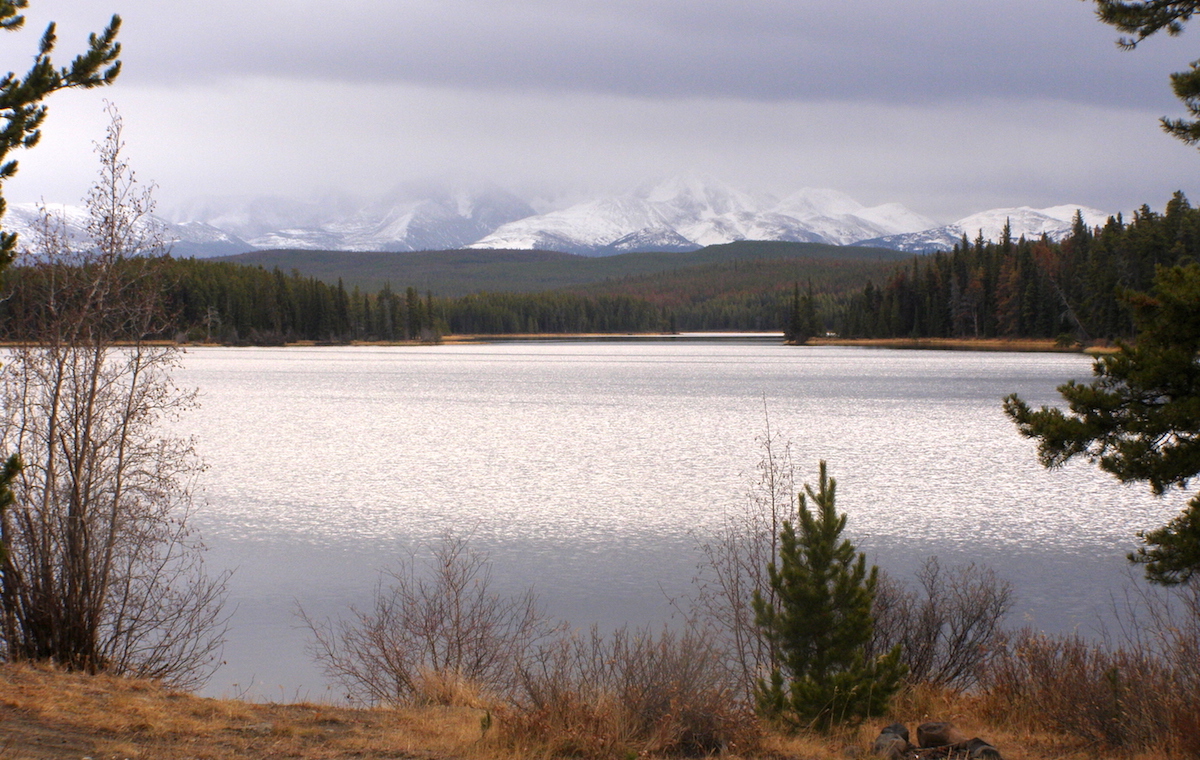Ecojustice and MiningWatch Canada head to court this week to defend Fish Lake ("Teztan Biny" in Tŝilhqot’in) from a risky mining project.
Mining projects often put communities and the environment in great peril – we only need to look to the Mount Polley tailings spill to see an example of the long-lasting devastation they can cause.
That’s why we’ll be in court this week to help uphold a federal assessment that found the New Prosperity mine project in Tŝilhqot’in territory in central B.C. would have serious ecological and cultural impacts.
If this sounds familiar, that’s because Ecojustice and MiningWatch Canada have been fighting this project for years — including in the review panel process for New Prosperity and now as an intervener in this week’s Federal Court hearing.
We’re taking a look at this case and why it’s so important.
What’s the issue?
In 2010, a federal review panel found that Taseko Mines Limited’s original proposal, called the “Prosperity” mine, would result in several significant environmental effects. The company’s initial proposal would have partially drained Teztan Biny in order to use it and the surrounding watershed to create ponds to hold “tailings”, a slurry of toxic chemicals, rocks and waste water created by the mine.
The federal government agreed with the review panel, and rejected the Prosperity mine proposal.
The following year, in 2011, Taseko submitted an updated proposal, the “New Prosperity” mine, for review — the company claimed that the new project design would preserve Teztan Biny. A second federal review panel was convened to conduct an environmental assessment.
The second review panel didn’t buy in to the New Prosperity mine project proposal either – the panel found that New Prosperity would have several significant adverse effects on the Tŝilhqot’in people, and their land and water. The federal government again agreed with the review panel’s assessment, and rejected the updated project proposal.
Taseko challenged the second review panel’s environmental assessment and report, claiming that the panel made flawed findings that the project would have serious effects on water quality in Teztan Biny and another nearby lake. However, the company refused to provide information the panel requested relevant to water quality and did not provide a detailed plan about how it would mitigate (minimize) those effects.
If this sounds a bit strange, you’re not alone – we think so too.
In our view, Taseko took a backwards approach by claiming that it would address any serious environmental problems after the environmental assessment process. Increasingly, our communities and environment demand a precautionary approach, lest we dive headfirst into murky, shallow water. When it comes to projects that may harm communities or the environment, we need to look before we leap.
Review panels need enough information during (not after) an environmental assessment to decide whether projects will likely have significant environmental effects.
Neither review panels nor the courts should accept resource companies’ vague assurances that any serious effects can be addressed at some later stage.
If proponents refuse to provide adequate information, it is perfectly reasonable for review panels to decide that environmental effects can’t be properly managed. In fact, review panels are obliged to err on the side of caution; that’s what precautionary decision-making is all about.
What’s at stake?
Environmental assessments are intended to minimize or avoid harmful environmental impacts before they occur. If companies are exempt from giving details about how they’ll address a project’s potentially serious environmental impacts during the environmental assessment process, it sets low expectations about how those companies should behave in the event of disaster, bankruptcy or abandonment.
Across the continent, governments (and taxpayers) have been left to clean-up dozens of un-remediated mine sites and environmental disasters.
Approving a mine now, and worrying later about how to address its serious impacts, risks giving the green light to environmentally, culturally, and economically-risky projects before anyone understands the full extent of the risks involved — and before anyone knows whether and how those risks can be managed and mitigated. This could lead to more communities being exposed to harm, without their knowledge or consent.
The risks of putting revenue before harmful impacts
Taseko claimed that any residual risks and project-related impacts would be justified by the project’s economic benefits. But not everyone shares the company’s view.
During the environmental assessment, MiningWatch submitted evidence that the company’s economic claims were exaggerated and failed to factor in significant external costs, or consider the net effect of the project on the labour market and economy. The tax breaks and subsidies that would be afforded to Taseko outweigh their likely contributions — making the long-term environmental liabilities created by the mine even more unsavoury.
Frequently, taxpayers — rather than mining companies — take on the burden of clean-up and remediation. As economist Robyn Allan found in a recent study, the B.C. Ministry of Energy and Mines had $1.3 billion in site reclamation costs that hadn’t been funded by mine operators as of March 31, 2014; the province is also responsible for reclaiming abandoned mines, putting taxpayers on the hook for a further $275 million.
Looking ahead
Environmental assessments are one of the few tools we’ve developed to prevent harm to the environment. All resource projects create some short to medium-term cash flow and jobs. However, the purpose of an environmental assessment is to consider the project’s long-term ecological and socioeconomic costs.
We’ve said it before and we’ll say it again: A precautionary approach to environmental assessment would help ensure that projects only proceed when we understand the risks they may pose. No project should get a green light unless the proponent can show that all serious risks can be safely managed. The safety of communities and the environment depend on it.
By Sean Nixon, Ecojustice, tel. (604) 685-5618 x225 and Jamie Kneen, MiningWatch Canada, cell (613) 761-2273
